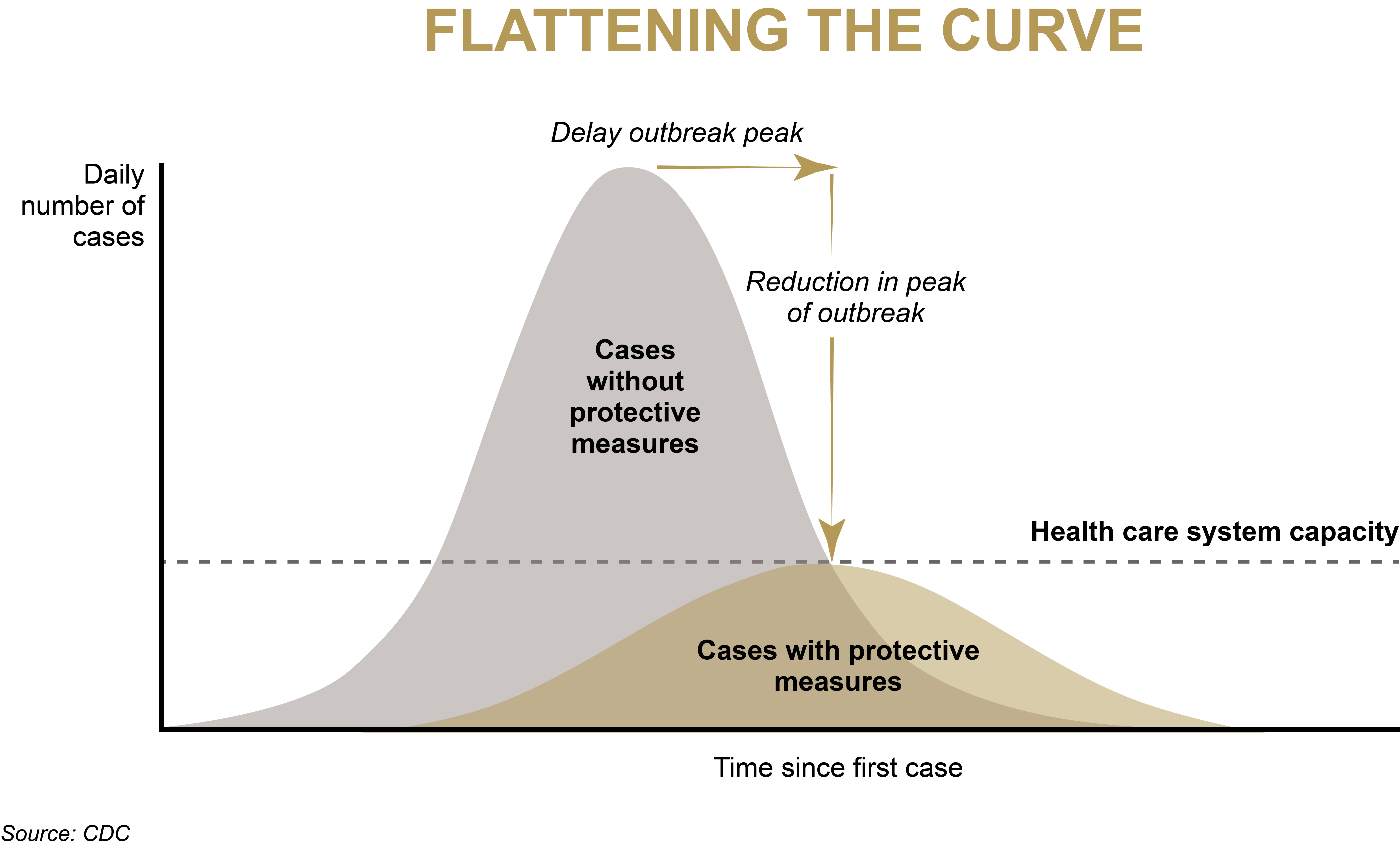
Three experts from Oakland University William Beaumont School of Medicine say “flattening the curve” is key to slowing the current coronavirus outbreak and eventually restoring a sense of societal normalcy.
The insights were provided by Tracey Taylor, Ph.D., associate professor of Microbiology in the Department of Foundational Medical Studies, and assistant dean of Diversity & Inclusion, OUWB, and Dwayne Baxa, assistant professor of Microbiology, Department of Foundational Medical Studies, OUWB.
Taylor and Baxa — along with Matt Sims, M.D., director of infectious diseases for Beaumont Health — recently wrote a book called “Learning Microbiology & Infectious Diseases: Clinical Case Prep for USMLE.”
Also weighing in was Trini Matthew, M.D., associate professor, Department of Internal Medicine, OUWB, and medical director of Hospital Epidemiology and Infection Control, Infectious Diseases & International Medicine, Beaumont Hospital, Royal Oak.
“Flattening the curve” generally refers to the need to reduce the number of new cases per day so that hospitals aren’t overwhelmed, according to Taylor. The “curve” is a bell-curve with the peak being the highest number of cases.
The OUWB experts agree that the only way to flatten the curve is to limit interactions amongst people.
“Based on data showing the near-logarithmic trajectory of the epidemic in other nations (and now here in the U.S.), in the absence of restrictions/cancellations to limit the spread (of COVID-19 in the U.S.), we would undoubtedly face an extremely grave public health challenge in the coming weeks,” Taylor said. “By limiting gatherings, we can start to reduce how quickly the virus spreads in our community: fewer social interactions means fewer chances for the virus to spread to new people.”
Like other organizations, Oakland University and OUWB have cancelled many events, such as the Match Day celebration, and suspended in-person classes, among other things.
“It is no coincidence that regions and countries which quickly enacted such restrictions have been able to severely reduce the growth of new cases, thus saving many lives,” Taylor said.
“Italy, on the other hand, was slow to enact these restrictions and they are now seeing 200 people die per day due to this virus.”
Flattening the curve
The idea of “flattening the curve” is being used in an increasing number of news stories about how to slow the spread of severe acute respiratory syndrome coronavirus 2 (SARS-CoV-2) — the virus that causes the disease COVID-19.
OUWB’s experts explained what “flattening the curve” means in this context.
“Outbreaks have a natural ramping up period, a peak of intensity, and a decay,” said Baxa. “This cycle forms a bell-shaped curve with the line being the number of cases on the y-axis. The height of the peak is the maximum number of cases resulting from infection and this number may be well above any social system’s ability to handle that load.”
Baxa said mathematical modeling of epidemics can assist in defining the features of a particular spread of infection. This is done through use of a value known as R0 (pronounced “r-nought”).
R0 is a value relating to the average number of people that would be infected as a result of being in contact with one infected case.
For yearly influenza, it is estimated that R0 is just over one, meaning about one person is infected from one contact case.
Should R0 be above one, according to Baxa, the infection is expected to spread. For values less than one, an infection can be expected to fizzle out.
The current R0 of COVID-19 “is thought to be around three, meaning an average of three people will get infected from a single new infection,” said Baxa.
But steps can be taken to lower the R0.
“The R0 can be influenced by breaking the chain of transmission,” said Mathew. “The goal is to get that R0 to less than one so people aren’t infecting, and therefore we can control this.”
Mathew said that means limiting face-to-face encounters, social distancing/staying a distance of at least 6 feet away from others, canceling events with large groups of people, and frequent hand-washing.
Further complicating matters, said Mathew, is the fact that people can be infected and not present any symptoms.
That’s why Mathew said efforts need to continue to limit “face-to-face interactions when we don’t know potentially who may be shedding the virus because people who are infected may not have a full-blown fever, chills, or body aches that would otherwise make them stay at home.”
“If people are required to stay home even when they feel well — though they might be infected — then you cut the chance of that virus being transmitted to someone else, and that’s very important,” she said.
An end in sight?
Of course, everyone wants to know when things may start to return to normal.
Baxa said “we will know the pandemic is self-limiting when the number of daily cases identified begins to decrease.”
“This can only be done with surveillance and diagnostic testing data,” he said. “The more data we acquire, the more accurate our predictive models will become.”
The potential impact of warmer weather is yet to be determined.
“Coronavirus family members, of which SARS-CoV-2 is a member, are generally periodic and have greater frequency at particular times of the year during certain seasons,” Baxa said.
“It is too soon to know if this outbreak will decrease as summer approaches for our hemisphere.”
Taylor said she agreed it is too early to make any kind of predictions about when the virus might slow.
“Because of the global pandemic status of this virus, plus the fact that it is a novel virus, it will be difficult to predict if/when the pandemic will slow down,” she said. “Hopefully our current efforts to mitigate the spread of this virus throughout the country and the world will give our health care and research infrastructure time to develop effective therapies to prevent serious disease.”
Note: Taylor and Baxa sourced date from the CDC and World Health Organization.

